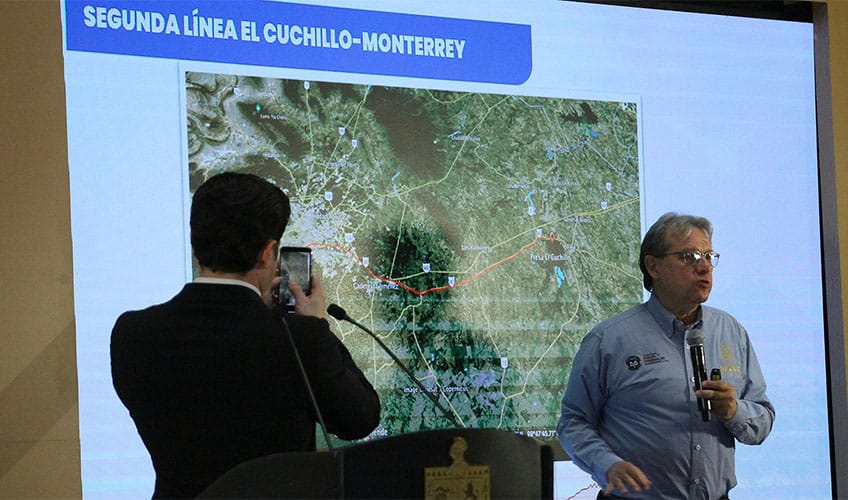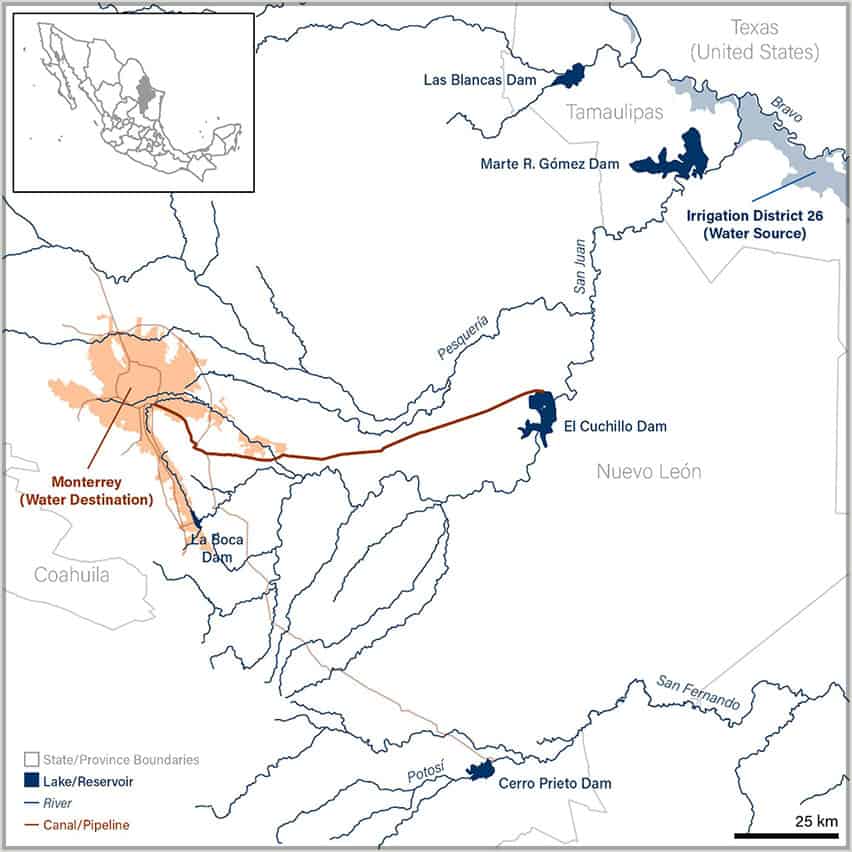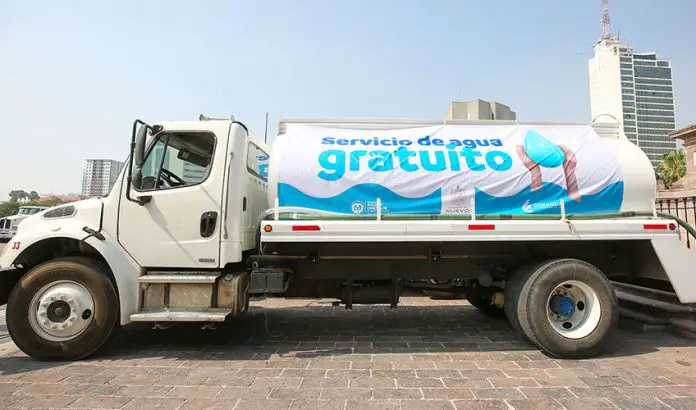Monterrey’s chances of avoiding another water crisis this summer are good, officials in the northern city say. March rainfall was above the historical average, a trend which is expected to hold through June.
“We’re not declaring victory, but we’re very pleased with this rain that’s strengthened our hope that we’ll get through this summer without experiencing a crisis like last year’s,” said Juan Ignacio Barragán Villarreal, head of the Monterrey Water and Drainage System (SADM), at his weekly conference.

Although rainfall for July and August is expected to be slightly lower than historical averages, if the April-through-June forecast is accurate, there should be no issues, Barragán Villarreal said.
The SADM director added that the outlook is also hopeful given that the El Cuchillo II aqueduct, which will deliver up to 5,000 liters of water per second to the city, is scheduled to begin operations in June or July. The under-construction La Libertad dam will also serve as a water source for Monterrey’s residents.
Last year’s water crisis saw residents of Monterrey and other Nuevo León municipalities go without water for days at a time. In February 2022, the state government – led by Samuel García of Movimiento Ciudadano – declared an emergency due to severe drought.
The Monterrey metropolitan area is supplied by three dams: La Boca, Cerro Prieto and El Cuchillo. The former two were at historically low levels in February, and by July Cerro Prieto was holding less than 1% of its capacity.

In March, García’s government announced a strategy of staggered water cuts, with water being available in certain neighborhoods only on a set schedule and at reduced pressure. The plan drew local protests and national criticism, as industries like agriculture and beverage production were only asked to voluntarily cede part of their water concessions.
In contrast, the National Water Commission (CONAGUA) reports this year that Cerro Prieto is currently holding 47,846,000 cubic meters of water, 15.9% of its total capacity, while La Boca is holding 24,800,000 cubic meters; 61% of its capacity. El Cuchillo, Monterrey’s largest dam, is reported to be storing 533,162,000 cubic meters, slightly under half of its total capacity.
Last year’s water emergency ended almost miraculously when rains came late August and early September, refilling dams considerably. Still, concerns linger about Nuevo León’s long-term water strategy. A 1996 agreement obliges Nuevo León to provide the neighboring state of Tamaulipas with water if El Cuchillo holds more than 315 million cubic meters of water on October 21 of each year and the Marte R. Gómez dam in Tamaulipas holds less than 700 million.
The government of Tamaulipas in fact activated this agreement last year just as Nuevo León’s crisis was coming to an end. Moreover, approximately 71% of Nuevo León’s water goes toward agriculture.
With reports from Dialogo Chino, Reporte Indigo, Informador and Jornada
